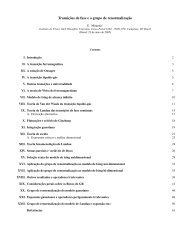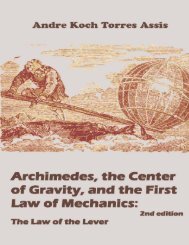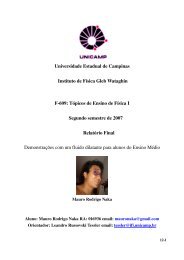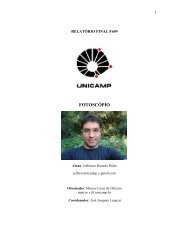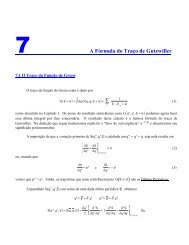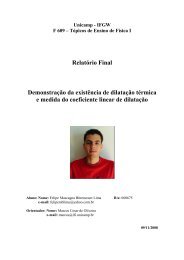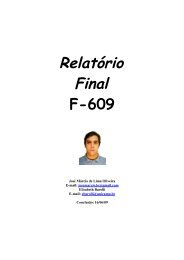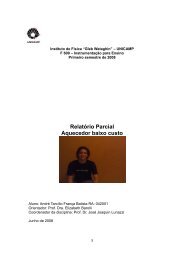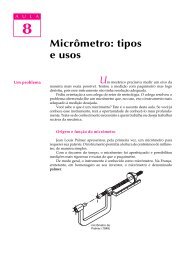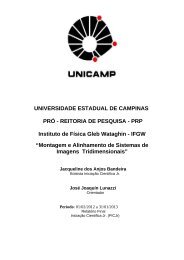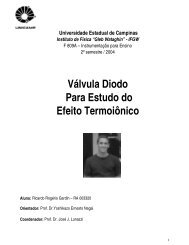The Experimental and Historical Foundations of Electricity - Unicamp
The Experimental and Historical Foundations of Electricity - Unicamp
The Experimental and Historical Foundations of Electricity - Unicamp
Create successful ePaper yourself
Turn your PDF publications into a flip-book with our unique Google optimized e-Paper software.
attract either flame or bodies near flame; for such effluvia have the<br />
virtue <strong>and</strong> analogy <strong>of</strong> rarefied humour, <strong>and</strong> they will produce their<br />
effect, bringing about unition <strong>and</strong> continuity, not through the external<br />
action <strong>of</strong> humours, or through heat, or through attenuation <strong>of</strong><br />
heated bodies, but through the attenuation <strong>of</strong> the humid substance<br />
into its own specific effluvia. Yet they draw to themselves the smoke<br />
from an extinguished c<strong>and</strong>le; <strong>and</strong> the lighter the smoke becomes as<br />
it ascends, the less strongly is it attracted, for substances that are<br />
too rare do not suffer attraction.<br />
From what has been seen before, not all substances are affected by rubbed<br />
amber (or, at least, not all substances are attracted with the same strength).<br />
Even some substances having the same weight <strong>and</strong> shape are clearly more<br />
strongly attracted by a rubbed plastic than others. For example, equal threads<br />
<strong>of</strong> cotton or copper feel a stronger attraction than threads <strong>of</strong> silk or synthetic<br />
polyamide.<br />
2.7 What Rubbed Substances Attract Light Bodies?<br />
Experiment 2.11<br />
We will now try to attract the small pieces <strong>of</strong> paper placed upon a table.<br />
We bring several rubbed objects near the pieces <strong>of</strong> paper. We will rub these<br />
objects in hair, in a sheet <strong>of</strong> paper, or in a cotton tissue. It is important to<br />
have homogeneous objects, that is, objects made <strong>of</strong> a single material, in order<br />
to avoid contradictory results. We should not, for instance, rub a plastic pen<br />
with metal parts. In this case it is best to rub a plastic straw <strong>and</strong> a metal spoon<br />
separately.<br />
We list here some <strong>of</strong> these substances: plastic, amber, glass, wood, metal,<br />
acrylic, a natural magnet, thin cardboard, rubber, etc.<br />
When the precautions mentioned previously have been taken, what is normally<br />
observed is that, after rubbing, amber, acrylic, <strong>and</strong> the plastic objects<br />
attract the small pieces <strong>of</strong> paper, as in Experiment 2.1 (Figure 2.3).<br />
All the other substances do not normally attract the pieces <strong>of</strong> paper, no<br />
matter how long or how hard are they rubbed. This is represented in Figure<br />
2.9 for a wood skewer.<br />
In the case <strong>of</strong> glass there are exceptions, as there are several varieties <strong>of</strong> glass<br />
with varying compositions <strong>and</strong> made by different fabrication processes. But in<br />
general, after being rubbed, the most common glasses do not attract pieces <strong>of</strong><br />
paper. <strong>The</strong> same can be said <strong>of</strong> rubber, as there are several varieties <strong>of</strong> rubber.<br />
<strong>The</strong> usual types <strong>of</strong> rubber found at home do not attract the pieces <strong>of</strong> paper.<br />
28



